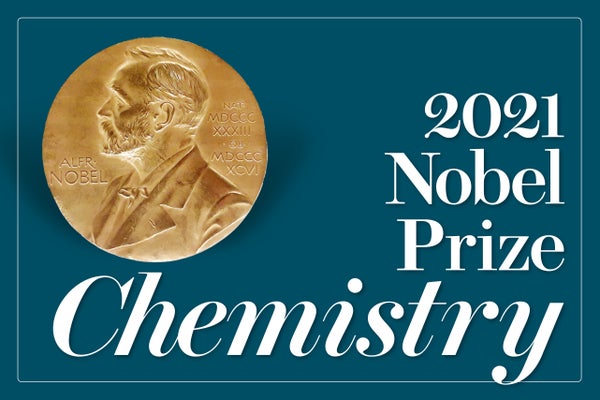“Chemists are kind of like magicians,” says H.N. Cheng, president of the American Chemical Society. “They wave a magic wand and create something new.” Now a new way of building molecules has won two chemists the 2021 Nobel Prize in Chemistry. The Royal Swedish Academy of Sciences announced on Wednesday in Stockholm that the prize has gone to Benjamin List, a director at the Max Planck Institute for Coal Research in Germany, and David W.C. MacMillan, a professor at Princeton University.
Working independently in 2000, the two researchers came up with a process called “asymmetric organocatalysis.” This is a way of constructing molecules with precise shapes that can be used in everything from new drugs to components of solar cells. “It is a new magic wand, a new trick,” Cheng says, and it has been particularly important for pharmaceutical development and for greener, sustainable chemistry. The two winners will split the award, which is worth approximately $1.14 million.
Catalysts are substances that chemists use to speed up reactions between existing molecules, in order to make new ones. In nature, such reactions can take a very long time or may not happen at all. But adding silver to a flask of hydrogen peroxide, for instance, quickly triggers the latter substance to break down into water and oxygen. Metals are particularly good catalysts because they can temporarily grab electrons from nearby molecules, loosening bonds between their components and allowing new molecules to form. Naturally occurring enzymes are also powerful catalysts, with abilities to force building blocks of new molecules together.
On supporting science journalism
If you're enjoying this article, consider supporting our award-winning journalism by subscribing. By purchasing a subscription you are helping to ensure the future of impactful stories about the discoveries and ideas shaping our world today.
But enzymes are often large and complex, and using them as catalysts involves a process that is slow and requires many steps. And employing metals such as copper or nickel to speed up reactions calls for highly specialized and expensive setups when used at an industrial manufacturing scale, and the process leaves behind toxic waste. “But in the year 2000 everything changed,” said Pernilla Wittung-Stafshede, a member of the Nobel Committee for Chemistry and a professor of chemical biology at Chalmers University of Technology in Sweden, at the announcement of the award. List and MacMillan devised techniques that employed smaller catalysts, and avoided metals. The difference could reduce the process for making a new molecule from 12 steps to just five, in one example, or increase overall efficiency by a factor of 7,000.
List was working with huge enzymes that catalyze reactions in the human body. He began to wonder if the entire large compound was really necessary for the process. An enzyme he was examining had one small component—an amino acid called proline—that seemed as if it might help create new molecules on its own. It contained a nitrogen atom that helped other molecules share electrons to form new bonds. So he isolated proline, and it did the job. “When I saw it worked, I did feel this could be something big,” he recalled when the Nobel committee reached him by phone to tell him about his prize while he was on vacation in Amsterdam on Wednesday.
Around the same time List was working with enzymes, MacMillan was also trying to simplify catalysts. He wanted to avoid metals, so he started to design simple organic molecules. These are frameworks of carbon atoms that hold other elements such as nitrogen. He found a framework with a nitrogen atom was able to donate or grab electrons from other molecules, breaking bonds or forming new ones.
One particularly attractive feature of MacMillan’s work was its ability to create specific molecular forms. Molecules can come in two mirror-image types, which chemists refer to as right-handed or left-handed. The human body is particularly sensitive to this distinction, frequently using only one form for important biological reactions. MacMillan’s catalyst could create reactions that produced mostly forms of one type or the other. This has made it very important in manufacturing pharmaceuticals, which can function properly in one form but fail in its counterpart.
Making drug molecules is a key current use of asymmetric organocatalysis, Cheng says. It helps produce antiviral drugs such as oseltamivir, which is sold under the brand name Tamiflu to fight flu infections. The catalytic process also has widespread agricultural uses in making targeted pesticides, adds Cheng, who specializes in green chemistry at the U.S. Department of Agriculture. Plants, like humans, use just one mirror-image form for specific reactions.
Not only has this catalytic technique made chemical production more efficient, it has also made it cleaner. Fewer steps in the process mean smaller amounts of toxic by-products. During the award’s announcement, Johan Åqvist, chair of the Nobel chemistry committee, said this year’s winning discoveries have been “a complete game changer.”
